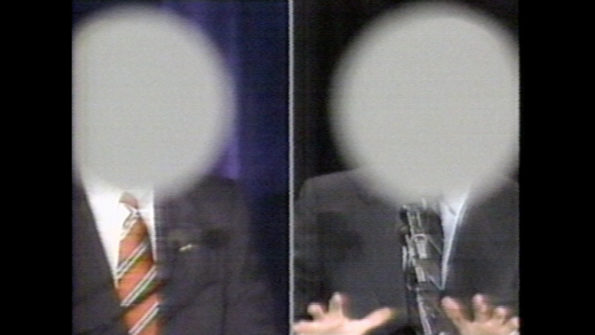Search
To search for an exact match, type the word or phrase you want in quotation marks.
A*DESK has been offering since 2002 contents about criticism and contemporary art. A*DESK has become consolidated thanks to all those who have believed in the project, all those who have followed us, debating, participating and collaborating. Many people have collaborated with A*DESK, and continue to do so. Their efforts, knowledge and belief in the project are what make it grow internationally. At A*DESK we have also generated work for over one hundred professionals in culture, from small collaborations with reviews and classes, to more prolonged and intense collaborations.
At A*DESK we believe in the need for free and universal access to culture and knowledge. We want to carry on being independent, remaining open to more ideas and opinions. If you believe in A*DESK, we need your backing to be able to continue. You can now participate in the project by supporting it. You can choose how much you want to contribute to the project.
You can decide how much you want to bring to the project.

Our horizon is defined by media landscapes. Natural landscapes (landscapes) were followed by urban landscapes (urbanscapes) and for decades it has been the media landscapes (mediascapes) that define and determine our present. Muntadas is one of the artists who has exhaustively analyzed the media landscape in his works. In a work from 1978, Two landscapes, he already made reference to the real and to the media landscape, that is to say, to its influence on the creation (or mediatization) of contemporary consciousness.
This impact of the media reaches one of its highlights in North American politics. Antoni Muntadas (resident in New York since the 1970s), together with Marshall Reese, have been focusing their long-term exploration of media landscapes on the periods of the electoral campaigns in the United States. Since 1984, they have created an anthology of television campaign ads for the presidency of the United States, which began with the Eisenhower-Stevenson campaign in 1952 and which they update every four years and accompany with presentations and talks. We are in 2020, in the midst of the Trump-Biden presidential campaign and Muntadas and Reese present the most recent installment of their work, a 97-minute video that collects and critically analyzes, through an edition that contrasts, superimposes or presents in parallel different campaigns, which evidence, different situations, values, priorities, needs or tendencies.
Political Advertisement Trailer2 from LigoranoReese on Vimeo.
“In 68, artists were making political performances, now politics is a performance”, wrote the essayist and curator Iván de la Nuez a few months ago in his twitter account. And certainly, Political Advertisement X: 1952-2020 evidences this comparison between the 1960s and the present moment, the political struggle, the protests and social mobilization of 60s and the actual inaction of the left, probably paralyzed by the reality show that Trump has turned into his stay in the White House.
But not only Trump, this political taste for performance has to do with the need to tell a story, the famous storytelling, thought out in mercantile terms. As the political essayist Christian Salmon analyzed in an interview with the Argentine newspaper La Nación, politicians are actors in a performance theater, regardless of the ideology they express, they build stories developed strictly for popular consumption. The space of the political is pulverized and liquefied. Their representative spaces, such as the Parliament, the seats of the governments or the public institutions, slide on the Internet in such a way that the social networks transform the politician into a media star.
In his book La Cérémonie cannibale, de la performance politique (The Cannibal Ceremony) Salmon explains: “We live in a bewitched democracy that has substituted action for storytelling, deliberation for distraction, the art of governing for the art of staging. Politics has moved from debate, discussion and dissensus, to the interactive, the performative and the spectral (…) The hashtag reproduces its history and its story. Storytelling and communication are condensed. And they form a product. The ancient arts of storytelling and the laws of rhetoric are combined with the new technologies of information and communication, as well as with the possibilities of direct action on the brains offered by the neurosciences”.
This is also what the tandem Muntadas-Reese feels, “Democracy is under threat on multiple levels today – from dark money donations that push for interests favoring the wealthy and corporations; from technologies of persuasion, Facebook, Twitter, Google and YouTube that have overtaken and reshaped the media landscape; to the even more mortal danger in 2020 that is the Coronavirus.”
Detecting, analyzing and understanding these mechanisms are the antidotes that allows resistance to manipulation and a capacity to react. This is precisely what Muntadas-Reese has been doing since the 80’s, with the ritual projections of this work-in-progress Political Advertisement X, 1952-2020, which will be shown in several locations specially in the US and also on the 3rd of November in an online session introduced by Albert Alcoz and with a subsequent colloquium by Marcelo Expósito.
Political Advertisement Trailer1 from LigoranoReese on Vimeo.

Montse Badia has never liked standing still, so she has always thought about travelling, entering into relation with other contexts, distancing herself, to be able to think more clearly about the world. The critique of art and curating have been a way of putting into practice her conviction about the need for critical thought, for idiosyncrasies and individual stances. How, if not, can we question the standardisation to which we are being subjected?
www.montsebadia.net
"A desk is a dangerous place from which to watch the world" (John Le Carré)